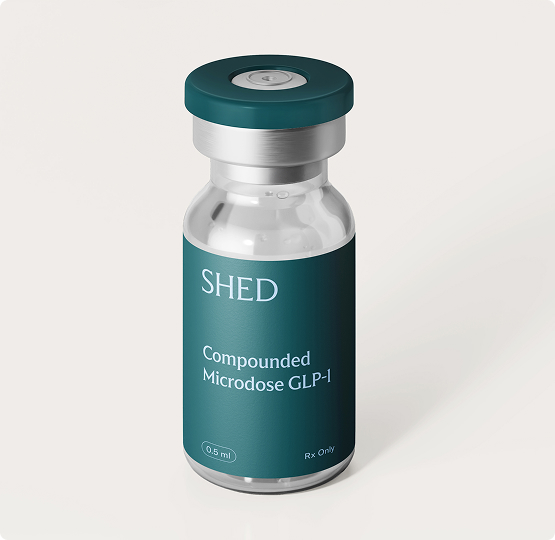When it comes to non-GLP-1 options in the weight management space, three combinations—MIC + B12, Metformin + Naltrexone + Topiramate, and Naltrexone + Bupropion—offer unique benefits that make them both versatile and highly strategic tools in a clinician’s arsenal. While GLP-1 receptor agonists have garnered significant attention for their potent effects on appetite suppression and glycemic control, they have their limitations, such as cost, availability, gastrointestinal side effects, and contraindications in certain patient populations. These three non-GLP-1 options not only bypass many of those challenges but also directly address core physiological and behavioral drivers of obesity in a more targeted, customizable way.
What makes these combinations stand out is their ability to modulate multiple metabolic and neurochemical pathways simultaneously. Rather than relying solely on satiety hormone pathways, they target insulin resistance, hepatic fat metabolism, reward circuitry, and energy regulation. This gives them an edge in treating patients who may not respond to GLP-1s or who have contraindications, such as a personal or family history of medullary thyroid carcinoma or pancreatitis. They also open the door to combination strategies, allowing clinicians to layer therapies thoughtfully without over-relying on a single mechanism.
Each of these medications brings a unique contribution: MIC + B12 primes the metabolic engine; Metformin + Naltrexone + Topiramate disrupts the physiologic and behavioral adaptations that fuel weight-loss resistance; and Naltrexone + Bupropion intervenes directly in the psychological reward loops that perpetuate cravings.
MIC + B12:
MIC (Methionine, Inositol, and Choline) combined with Vitamin B12 acts as a metabolic catalyst, particularly useful during active weight-loss phases. MIC compounds promote lipotropic activity, meaning they help the liver process fat more efficiently and reduce fat accumulation. Methionine assists in breaking down fats and preventing buildup in the arteries. Inositol supports serotonin production, which can help regulate mood and appetite. Choline is essential for liver function and fat metabolism. When paired with Vitamin B12, which boosts energy production at the cellular level and supports neurological function, the result is a synergistic blend that enhances fat mobilization, reduces fatigue, and supports sustained energy throughout the day.
This formulation is especially effective for patients who are already engaged in caloric restriction or intermittent fasting. By optimizing liver health and mitochondrial efficiency, MIC + B12 provides a foundation for more consistent and sustained weight loss outcomes. It also has ancillary benefits, such as improved focus, mood stabilization, and reduced fatigue, which are critical in the behavioral aspect of long-term weight management.
Metformin + Naltrexone + Topiramate:
This triple combination is a powerful strategy for patients who have hit a plateau in their weight-loss journey or have underlying metabolic resistance. Metformin is a well-known insulin sensitizer that reduces hepatic glucose production and improves peripheral insulin uptake, particularly helpful for those with prediabetes or polycystic ovary syndrome. Naltrexone, traditionally used in addiction treatment, blunts the dopamine-driven reward system associated with emotional and stress eating. Topiramate is an anticonvulsant that has been shown to reduce appetite and enhance satiety by modulating GABA receptors and inhibiting carbonic anhydrase.
Together, these three agents address distinct aspects of weight gain: metabolic dysfunction, reward-based eating, and appetite dysregulation. Patients often describe a 'quieting' of food noise or the constant preoccupation with eating, which gives them the mental clarity to make better nutritional decisions. This combination also offers a lower stimulant profile compared to many traditional weight-loss drugs, making it a viable option for patients sensitive to adrenergic side effects.
Naltrexone + Bupropion:
It works through a dual mechanism: bupropion enhances dopamine and norepinephrine activity in the hypothalamus, curbing appetite and increasing energy expenditure, while naltrexone dampens the reinforcing pleasure response to food, particularly in those prone to emotional or compulsive eating. This makes it ideal for individuals who struggle with cravings triggered by stress, boredom, or psychological cues rather than just hunger.
Clinical trials have demonstrated significant improvements not only in weight reduction but also in long-term behavioral change. The medication helps rewire the habitual cycles of overeating by making patients more mindful and less reward-driven. When paired with behavioral coaching and nutritional guidance, it becomes a transformative tool for long-term metabolic resilience.
Written by: Dr. Asad Niazi, Doctor of Medicine (MD), Internal Medicine Physician
Dr. Asad Niazi completed his undergraduate studies at Texas A&M University in College Station, graduating a full year early at the top of his class with summa cum laude honors. He went on to earn his medical degree from the Texas Tech University Health Sciences Center Paul L. Foster School of Medicine in El Paso, where he also completed a Master’s in Public Health during his medical training. He pursued internal medicine training at Dallas Methodist Hospital and later at Huntington Memorial Hospital in Pasadena, California. Outside of medicine, he enjoys working out, hiking, exploring the outdoors, and spending time with his family. He is especially passionate about providing accessible, evidence-based care to patients who may not otherwise qualify for GLP-1 therapy.
.svg)









